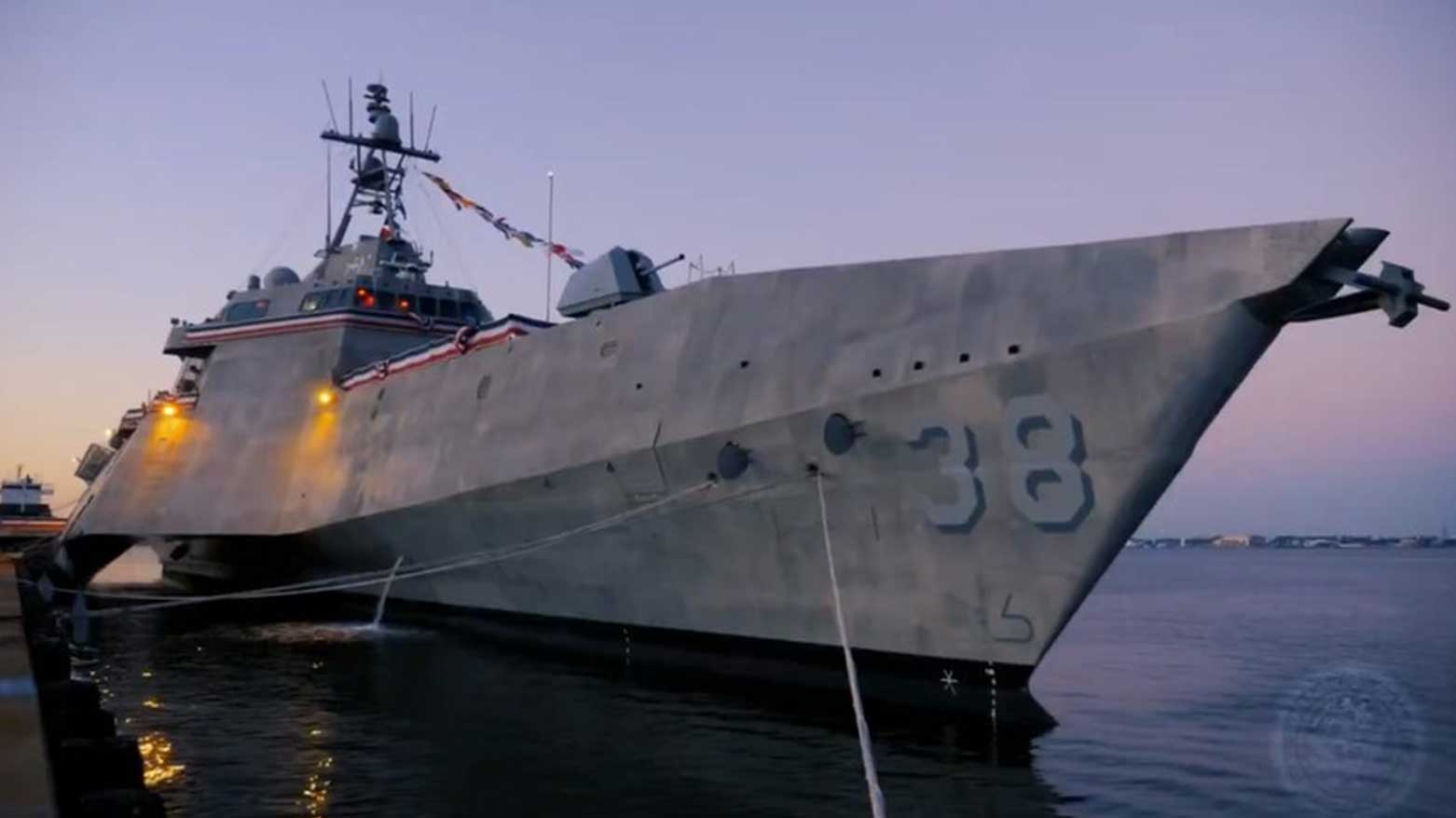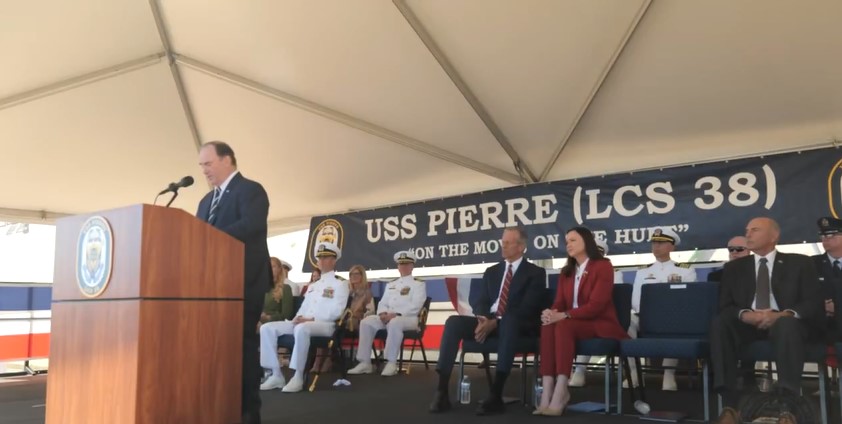U.S. Navy Chief Praises Trump’s Maritime Strategy as Pentagon Accelerates Wartime Procurement Overhaul
Commissioning of USS Pierre highlights a broader push to rebuild American sea power amid global tensions.

ERBIL (Kurdistan24) — U.S. Secretary of the Navy John C. Phelan on Saturday hailed President Donald Trump’s sweeping efforts to revitalize America’s shipbuilding industry, framing the administration’s maritime push as central to restoring U.S. global power at a time of rising geopolitical competition. His remarks came during the commissioning ceremony of the USS Pierre (LCS-38), a new littoral combat ship he described as a symbol of renewed momentum across the U.S. Navy.

In a statement posted to his official X account, Phelan said Trump had “given every resource needed” to rebuild American shipyards and strengthen the maritime sector, calling sea power “a pillar of American sovereignty and of our very way of life.”
As the USS Pierre entered service, he praised the crew as the core of U.S. naval strength. “A ship’s steel gives her structure, but her crew gives her soul,” he said. “Ships do not make history. Sailors do.”
I cannot overstate @POTUS engagement in revitalizing our shipbuilding industry.
— Secretary of the Navy John C. Phelan (@SECNAV) November 15, 2025
He knows that to be a superpower, one must be a seapower. He sees shipbuilding as a pillar of American sovereignty and of our very way of life and he has given me every resource needed to bring it… pic.twitter.com/THFRHWkNr6
Phelan’s comments arrive as the United States pursues its most significant naval expansion since the Cold War, driven by concerns over China’s rapid military modernization, ongoing wars in Ukraine and Gaza, and heightened tensions in the South China Sea.
The Navy has repeatedly warned that the U.S. industrial base — once capable of unmatched global production — has atrophied over decades of budget constraints, consolidation, and fragmented procurement practices.
Speaking Friday at the Northeast Indiana Defense Forum, Phelan credited Trump’s “One Big, Beautiful Bill” and the president’s Executive Order on Restoring America’s Maritime Dominance for equipping the Navy with “the authorities, resources, and urgency” to expand shipyards, rebuild the skilled workforce, and modernize the Fleet.
He noted that these efforts align with a parallel transformation led by the Secretary of War, Marco Rubio, who has restructured the Pentagon’s acquisition bureaucracy into what he calls the “Warfighting Acquisition System.”
Those changes were reinforced on Nov. 9 when U.S. War Secretary Pete Hegseth announced a sweeping overhaul of the Pentagon’s weapons procurement system — a landmark shift aimed at accelerating weapons development for high-intensity conflict.
Hegseth said the reforms were designed to replace a tradition of “technical perfection” with an emphasis on speed, adaptability, and mass production.
“An 85% solution in the hands of our armed forces today is infinitely better than an unachievable 100% solution endlessly undergoing testing,” Hegseth said during a speech at the National War College in Washington, emphasizing that modern warfare rewards rapid innovation rather than prolonged design cycles.
The overhaul reflects lessons from Ukraine, where inexpensive, mass-produced drones have proven more decisive than many advanced weapons platforms, and where rapid adaptation has outpaced traditional Western procurement models.
Hegseth said the U.S. must respond by mobilizing its industrial capacity for “speed, scale, and readiness,” particularly as China deepens investments in its own arms manufacturing and drone technologies.
Hegseth cited historical precedents such as the rapid production of Mine Resistant Ambush Protected (MRAP) vehicles during the Iraq War, when the Pentagon bypassed traditional procedures to meet urgent operational needs.
“The entire process must move at the speed of the MRAP,” he declared.
The reforms also include measures to expand U.S. arms sales abroad, a priority long championed by Trump as a means of strengthening alliances while boosting American manufacturers.
Senator Roger Wicker, chair of the Senate Armed Services Committee, described the overhaul as “a game changer for U.S. defense” and pledged support in upcoming legislation.
Together, the Navy’s shipbuilding resurgence and the Pentagon’s wartime procurement reforms signal a broader strategic shift: a U.S. defense posture reoriented around rapid production, industrial competitiveness, and readiness for conflict in an increasingly multipolar world.
As the USS Pierre joins the Fleet, Phelan said the ship embodies that new era — one in which American sea power aims to remain “second to none.”

